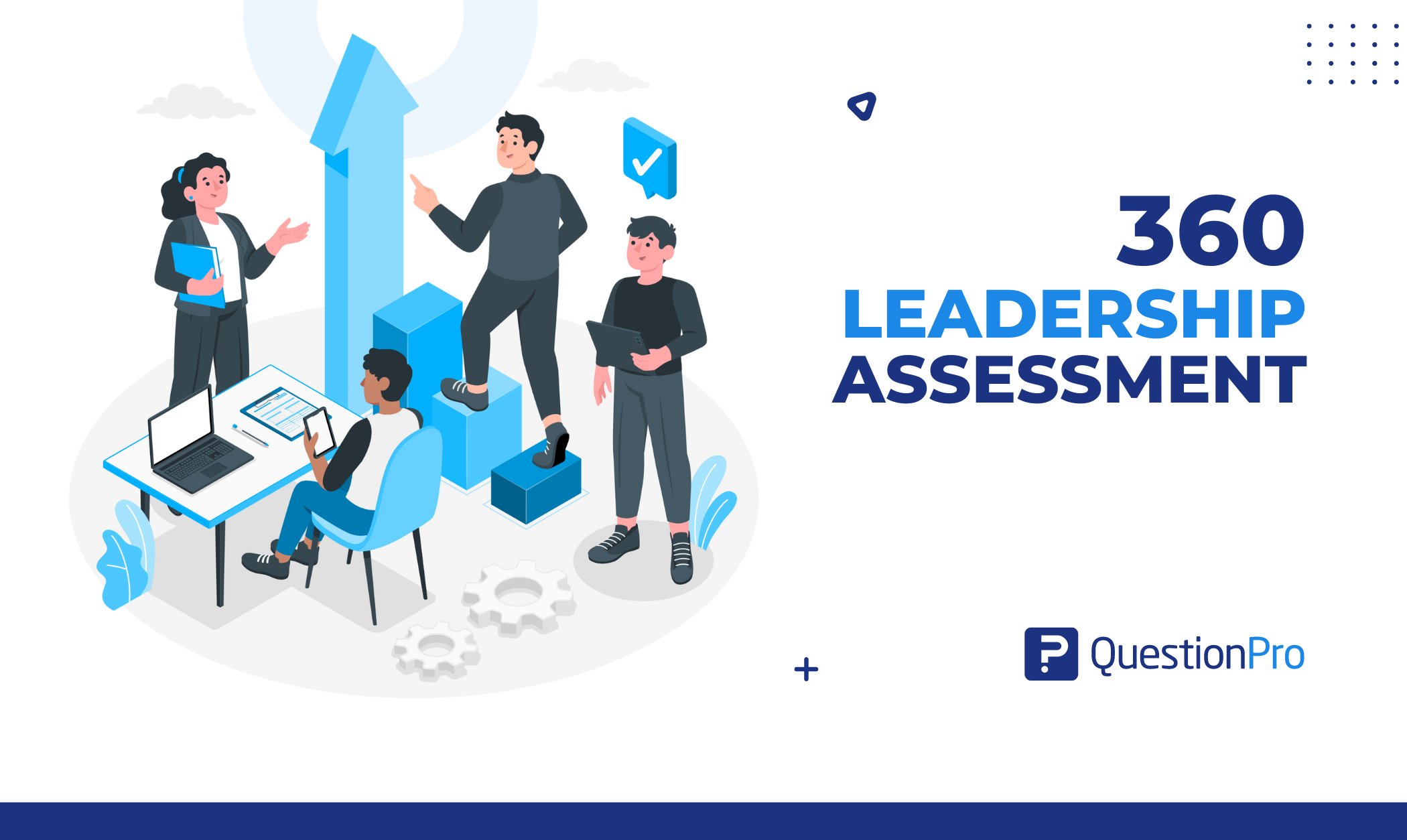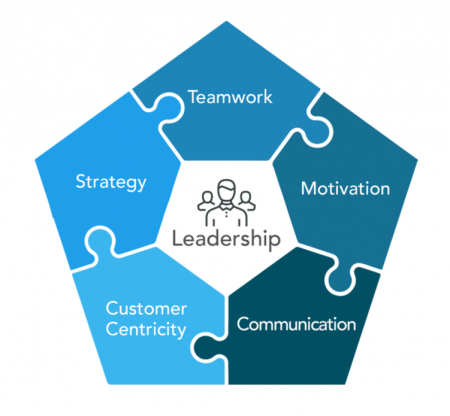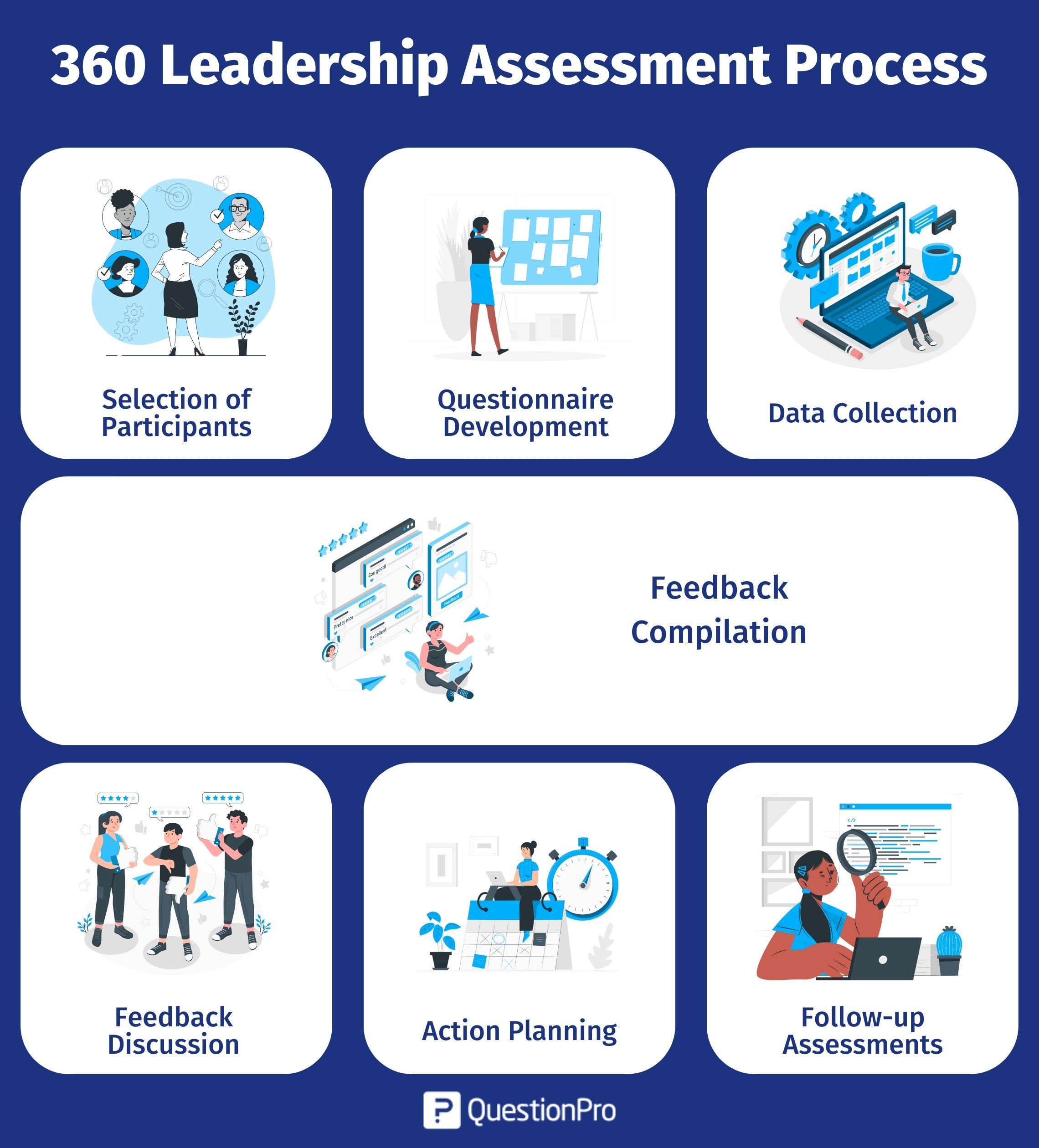
In today’s dynamic business landscape, effective 360 leadership assessment goes beyond authority – it hinges on trust and seamless team alignment. From the Oval Office to Silicon Valley, our citizens and employees are demanding more from those who hold leadership positions. Across the nation, people have begun to organize and rally so businesses and political leaders can hear their voices in unison.
These movements have caused quite a disruption among many businesses, and overnight some workplaces have become somewhat hostile working environments. In order to maintain successful workplaces, business leaders need to address how they will guide their organization through a time of uncertainty by relying on their company’s core values and mission.
Learn more: Leadership Assessment Survey Questions + Sample Questionnaire Template
“…only 23 percent of companies believe their employees are fully aligned with the corporate purpose.” – Deloitte 2023 Global Human Capital Trends
Age-old studies indicate that effective leadership starts by listening, which is actually applicable to every relationship. Luckily, small and easy-to-implement tweaks (take a 360 leadership assessment) can be made to business systems, which will help reduce or eliminate bias—without changing anyone’s instincts, feelings, or beliefs.
Understanding 360 leadership assessment
A 360 leadership assessment is a feedback process used in organizations to evaluate a leader’s performance, skills, and effectiveness from multiple perspectives.
Unlike traditional top-down assessments, where only a supervisor or manager provides feedback assessment tools, a 360 assessment involves collecting feedback from a variety of sources, including peers, subordinates, supervisors, and even the leader themselves.
This well-rounded approach aims to provide a more comprehensive and accurate picture of a leader’s strengths, weaknesses, and overall leadership style. Here’s a summarized breakdown of some key points:

1. Develop a Strong Core Mission and Purpose
Developing a strong sense of purpose for your employees is never too late. Your organization might be well established or in its infancy—the investment in what you do and why you do it will bring a sense of purpose and direction.
It doesn’t need to be a 6,000-word manifesto like Mark Zuckerberg’s recent address to the Facebook community. Still, your organization’s mission and values should be abundantly clear and resonate with every department and every employee.
Providing a north star will improve your team’s alignment and cohesiveness when working with cross-functional groups. By linking company values to OKRs, contributors can creatively drum up out-of-the-box solutions to get their team rowing in the same direction.
2. Continuously Invest in People
Human capital management is the single most commonly overlooked way to amplify an organization’s leadership potential. Many times, companies have not formally given the responsibility of designing and delivering a basic framework around the employee experience.
Inspirational leadership requires employees to feel that their work is important to the organization’s success. In general, employees seek to work for a humanistic workplace that provides continual coaching and dynamic learning opportunities.
The basic culture must include recognition of loyalty and a fair, inclusive, and diverse work environment. This creates teams built for success—team members are challenged, and wins are rewarded.
To gauge your workplace culture quickly, step back and let your team members make decisions without guidance. You will quickly see the decisions they make on their own accord and, as a result, discover how and why individuals within the organization make decisions.
This learning exercise provides insight into alignment and can be used as a discussion point to empower individuals by mapping their career trajectories.
3. Build Rapport Through Transparency and Honesty
A number of studies indicate a clear positive correlation among companies where team members can freely voice their concerns with management, displaying higher retention and stronger performance. When employees cannot speak freely with senior management, opportunities to improve are missed, directly impacting the organization’s top and bottom lines.
In today’s technology-savvy world, working side-by-side among colleagues might not be viable as scattered and dispersed teams are quickly becoming the norm. Businesses utilize talent from around the world, often comprising freelancers or contract workers. These work environments limit management’s ability to maintain close physical proximity to their team.
However, an emotional connection with each and every contributor is necessary. Strong leadership behaviors require building relationships—talking with employees rather than issuing orders. Start-ups tend to do this very well and utilize this as a strategic advantage to outperform their rivals by competing in areas of engagement, alignment, and operational flexibility.
To enhance the relationship with your team, consider the following: Do you feel your business team leaders are authentic and straightforward with their organizations? If not, does your team feel comfortable bringing up difficult topics? The highest-performing teams exchange feedback on a more regular and casual basis. Team members feel inspired if you are advocating for their cause.
4. Rethink Your Leadership Model with a 360 Leadership Assessment
The new model should include the concepts of teamwork, motivation, strategy, customer centricity, and communication.
LEARN ABOUT: Employee Centricity
Today’s Leaders are expected to spread their message through digital means, whether through social media, a blog post, or a short video. Today’s customers demand to know the person behind a product to measure authenticity and to see if their values align.
During this digital age, where stories are recorded and told over a variety of interactions, customers expect developing leaders to show their flaws and connect with their personal journey as they show vulnerability at times.
LEARN ABOUT: Leadership Assessment Tools
360 leadership assessment process
Here’s how a typical 360 leadership assessment process works:

Selection of Participants
The individual being assessed (the leader) selects a group of participants who will provide feedback. This group usually includes colleagues, team members, supervisors, and sometimes even external stakeholders.
Questionnaire Development
A set of structured questions or statements is developed to assess various aspects of leadership, such as communication, decision-making, teamwork, adaptability, and more. These questions are designed to capture both qualitative and quantitative feedback.
Data Collection
The selected participants anonymously responded to the questionnaire. They provide their observations and assessments of the leader’s behavior patterns and performance based on their interactions and experiences.
Feedback Compilation
A designated person or team collects, compiles, and analyzes the feedback. This process involves aggregating responses, identifying patterns, and generating a report that summarizes the feedback.
Feedback Discussion
The leader receives the feedback report, usually during a feedback discussion or coaching session. HR professionals, coaches, or mentors can facilitate this discussion and help the leader interpret the feedback and identify areas for improvement.
Action Planning
Based on the feedback received, the leader and their support team (if applicable) work together to create an action plan for personal and professional leadership development. This may involve setting goals, attending training programs, seeking coaching, or taking other steps to enhance leadership skills.
Follow-up Assessments
Follow-up assessments can be periodically conducted to track the leader’s progress. These subsequent assessments help measure whether the leader has successfully implemented changes and improved their leadership abilities.
LEARN ABOUT: Employee Experience Framework
Benefits of a 360 leadership assessment?
These benefits collectively contribute to improved leadership effectiveness, team performance, and organizational growth. Here are the benefits of a 360 leadership assessment:
- Comprehensive Feedback: Provides a well-rounded perspective by gathering feedback from superiors, peers, subordinates, and even external stakeholders.
- 360 Degree Feedback View: Offers insights from various angles, giving leaders a holistic understanding of their strengths and areas for improvement.
- Self-Awareness: Helps leaders understand their impact on others and identify blind spots, leading to increased self-awareness.
- Development Opportunities: Pinpoints specific areas for growth, enabling targeted leadership development and training initiatives.
- Objective Assessment: Reduces biases as feedback comes from multiple sources, leading to a more objective evaluation.
- Alignment with Expectations: Enables leaders to align their behavior with organizational expectations and values.
- Enhanced Communication: Encourages open dialogue among team members, fostering improved communication and collaboration.
- Accountability: Holds leaders accountable for their actions and behavior, promoting responsible leadership.
- Team Development: Supports team growth as leaders work on areas that impact team dynamics and performance.
- Cultural Alignment: Aids leaders in aligning their actions with the organization’s culture and values.
- Performance Improvement: Identifies strengths to leverage and weaknesses to address, resulting in enhanced performance.
- Succession Planning: Informs succession planning by identifying potential leaders, future leaders, and their developmental needs.
- Leadership Calibration: Provides insights for aligning leadership qualities across different levels of the organization.
Learn About: 360 Degree Appraisal
How does a 360 leadership assessment measure competencies?
A 360 leadership assessment measures leadership competencies by collecting feedback from multiple sources, including peers, subordinates, supervisors, and sometimes even external stakeholders. The goal is to obtain a comprehensive and well-rounded perspective on a leader’s performance across various competency areas. Here’s how the process generally works:
Selecting Competencies
The organization or leadership development team identifies the specific competencies or interpersonal skills they want to assess before conducting the assessment. These leadership competencies are usually aligned with the organization’s leadership framework or core values.
Questionnaire Development
A questionnaire is developed based on the selected competencies. The questionnaire typically consists of statements or questions that describe leadership behaviors or actions related to each competency. Respondents are asked to rate the leader’s performance on each statement using a rating scale (e.g., from strongly disagree to agree strongly).
Feedback Collection
The questionnaire is distributed to various individuals who interact with the leader in different capacities. This includes peers, direct reports, supervisors, and sometimes external clients or stakeholders. Respondents provide feedback based on their observations and experiences with the leader.
Anonymity and Confidentiality
Most 360 assessments ensure anonymity and confidentiality to encourage constructive and honest feedback. This allows respondents to provide feedback without fear of reprisal.
Data Compilation
The data is compiled and analyzed once the responses are collected. This can involve aggregating the responses and calculating average scores for each competency. The results provide an overall view of how the leader is perceived in terms of the assessed competencies.
Feedback Report
The leader receives a feedback report summarizing the assessment results. This report usually includes numerical ratings, qualitative comments, and specific examples of behaviors related to each competency. The feedback report aims to provide a clear picture of the leader’s strengths and areas for improvement.
Self-Assessment
In addition to feedback from others, leaders often complete a self-assessment as well. This allows them to compare their self-perception with how others perceive them. Discrepancies between self-assessment and others’ assessments can provide valuable insights.
Development Planning
Based on the assessment results, the leader works with a coach, mentor, or development facilitator to create a personalized leadership development plan. This plan outlines specific actions and strategies to enhance leadership strengths and address areas needing improvement.
Follow-Up Assessments
Some organizations conduct follow-up assessments at later intervals to track the leader’s progress and development. This helps to evaluate the effectiveness of the development plan and measure growth opportunities over time.
LEARN ABOUT: Leadership Assessment Tools
360 leadership assessment with QuestionPro
Earlier this year, our CEO, Vivek Bhaksaran, took on a challenge to help his company and community by releasing a powerful 360 leadership assessment tool free to use and share. The initiative stemmed from his unconventional idea to share his annual 360 leadership report with the rest of his 150+ employees.
This action was quite a pivotal point in QuestionPro’s history as it was unprecedented to share a confidential report. The entire company was moved by his humility and his 90-day action plan to transform the organization.
As a company, we made the collective decision that our internally-built tool should be available free for anyone in a leadership position, anywhere, inside or outside of our organization.
Improving and investing in an employee’s journey is an especially critical element of a company’s ability to thrive in a highly competitive globalized economy. When employees are put first, they turn this over and take care of customers, improving top and bottom-line performance and providing better ROI to shareholders.
Listening to employees and providing and fulfilling their experience helps organizations retain skilled contributors. Digital-age leaders are required to build teams, keep contributors engaged, and drive a culture of innovation, learning, and continual improvement.
Our employee engagement platform offers help to HR teams in two ways:
- Our Pulse tool provides answers for those who are looking for a way to measure employee engagement on an ongoing basis
- Our 360 feedback tools and Frameworks tools can help leaders understand how their employed talent is aligned with their business.
Organizations can update their employee toolkit by exploring ways to measure and keep employees engaged, using employee insight platforms such as QuestionPro Workforce.







